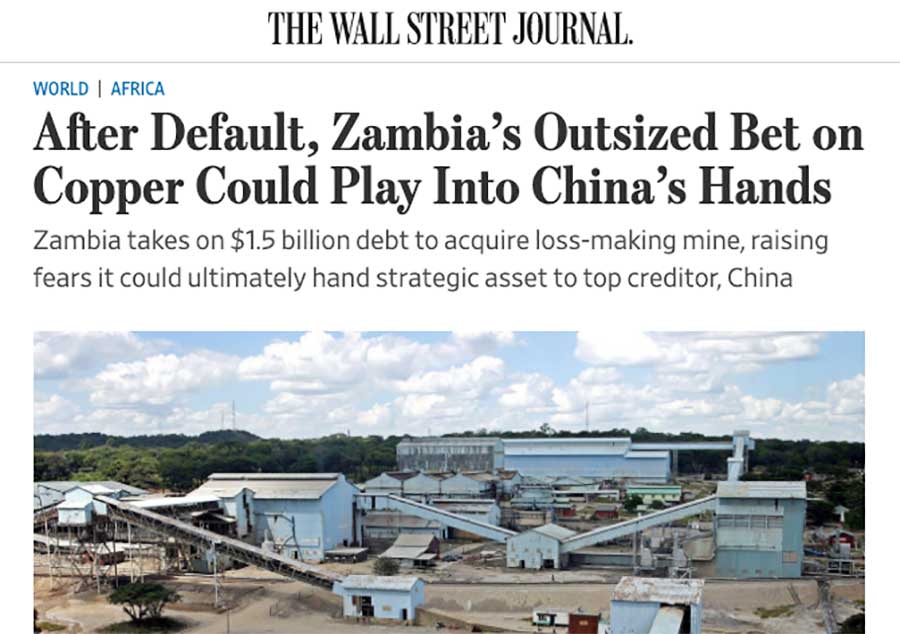
It’s not surprising that a lot of people, including the U.S. Secretary of State, remain mistaken in their belief that the Chinese seize physical assets in the event of a loan default, given that it continues to appear in news reports — including yesterday’s Wall Street Journal.
The headline and sub-head of the WSJ imply that the report is about how Zambia’s state-owned mining company took a very risky decision to take on $1.5 billion in debt to acquire Mopani Copper Mines from the Anglo-Swiss mining giant Glencore. But the story barely mentions the Chinese, except for making the dubious claim that because China is Lusaka’s largest bilateral creditor, if the mine encounters financial difficulties it could be forfeited to Chinese creditors.
However, the journalists used only unnamed “analysts and Zambian officials” as the basis of the claim and fail to provide any credible, on-the-record evidence to support this assertion:
If Zambia fails to make the repayments, analysts and Zambian officials say, the mine could be exchanged as collateral with China for debt referral or forgiveness, which would put the strategic state asset into Beijing’s hands. Some U.S. officials have said China is extending huge and potentially unsustainable debt to African countries to give it greater regional sway.
The only attribution used to support the story’s debt trap suggestion is a link to another WSJ report on the issue. Good editors in most reputable international newsrooms would generally insist on a primary source or credible research report to support such a serious accusation.








